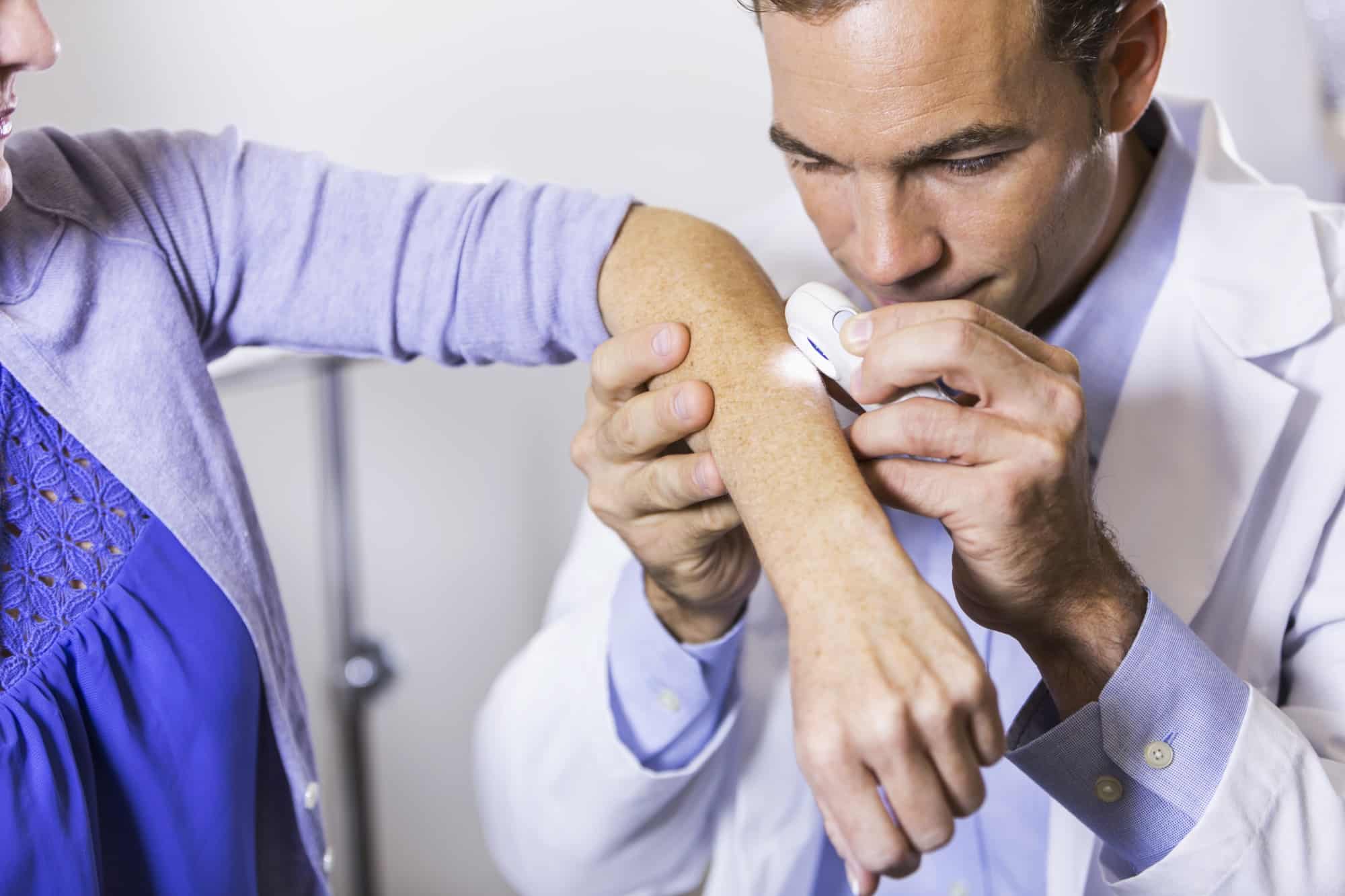Center for Skin Cancer
Center for Skin Cancer
SBC’s Skin Cancer Center in Los Angeles, CA
Skin cancer, which is the most common form of cancer in the United States, is the result of the abnormal growth of skin cells.
One in five adults will develop some form of skin cancer in their lifetime. Over time, the abnormal skin cells multiply and can become malignant. Cancer can affect skin anywhere on the body, but most frequently appears on skin that is exposed to the sun. There are nearly 1 million new cases of skin cancer in the United States each year.
At Skin & Beauty Center, we are proud to offer top-of-the-line skin cancer care at our Center for Skin Cancer in California.
What are the Types of Skin Cancer?
There are three types of skin cancer:
- Basal cell carcinoma: BCC is the most common form of skin cancer. It is usually found in areas that are routinely exposed to the sun, such as the face, neck, back of ears, and even the scalp. While BCC typically does not spread to other parts of the body, it can cause significant damage if left untreated.
- Squamous cell carcinoma: SCC is also caused by sun exposure. This form of skin cancer does have a higher risk of spreading to lymph nodes and other internal organs.
- Melanoma: Melanoma is the most dangerous form of skin cancer. Melanoma happens when there is an overproduction of melanocytes, the cells that are responsible for the pigmentation of the skin. Melanoma can develop anywhere in the body, including areas that are not exposed to sunlight.
What are the Causes and Risk Factors of Skin Cancer?
Most cases of skin cancer are caused by direct exposure to UV rays. Other risk factors for developing skin cancer include:
- Having fair skin, hair, and eyes
- Family or personal history of skin cancer
- Skin that is prone to freckles or moles
- Frequent outdoor work or leisure activities
- Exposure to certain chemicals
- History of childhood or repeat sunburns
What are the Signs and Symptoms of Skin Cancer?
The signs and symptoms of skin cancer can differ depending on the type. However, some of the most common tell-tale signs include:
- New or changing moles: Moles with irregular edges or ones that change in size, shape, or color.
- Sores that do not heal: Any sores that do not heal could be a form of skin cancer.
- Pink or red patches: Scaly patches that are pink or red in color may be a sign of squamous cell carcinoma.
What are My Skin Cancer Treatment Options?
Treatment of skin cancer depends on the type, where it is located, and which stage it is.
- Surgical excision: Surgical excision is usually recommended for localized cancers. This treatment involves the excision of the tumor until it has clear margins.
- Mohs surgery: This type of surgery is performed most commonly for high-risk cancers, such as melanoma of the face.
- Radiation: Radiation treatment is a curative or palliative therapy that targets specific areas of the face or body. This type of therapy may be used when surgery is not an option. It may also be used in conjunction with surgery.
- Topical treatment: For early-stage skin cancer, topical treatment may be an option. These creams and gels contain 5-fluorouracil or imiquimod to kill cancer cells.
How Do I Prevent Skin Cancer?
There are several ways you can protect your skin and prevent skin cancer from developing:
- Apply sunscreen: You should use sunscreen even on cloudy days. Look for ones that have an SPF of 30 or higher.
- Sit in the shade: You should avoid sitting in direct sunlight between 10:00 am and 4 pm.
- Cover up: Always wear a sunhat, sunglasses, and if it is not too hot, a long-sleeved shirt.
- Avoid Tanning Beds: Tanning beds emit UV rays, so it is best to avoid using them.
Protecting yourself and your skin doesn’t need to be difficult. If you have skin concerns, reach out to Skin & Beauty Center at 818.842.8000. We have offices conveniently located throughout Los Angeles.





